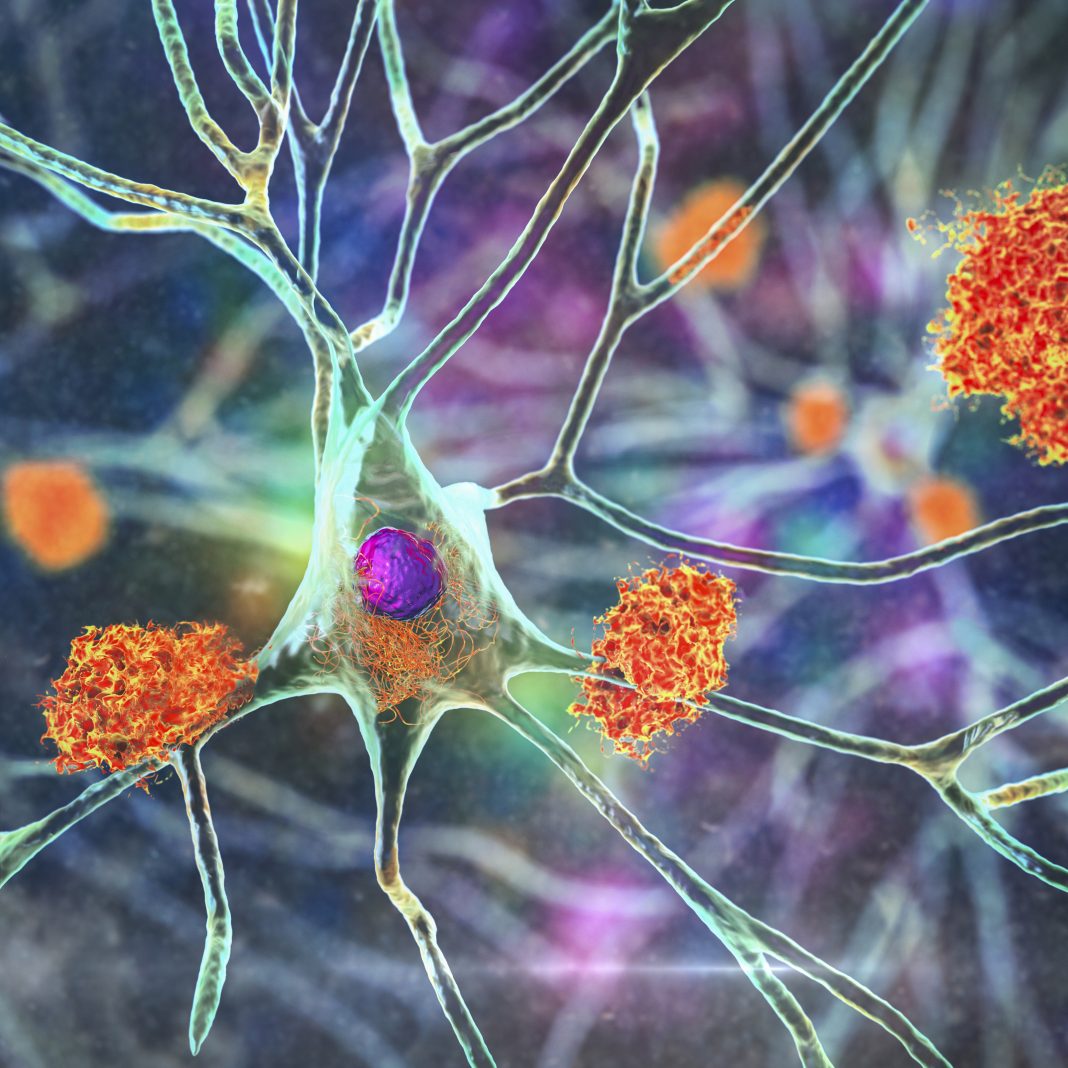Illustration of amyloid plaques among neurons and neurofibrillary tangles inside neurons. Amyloid plaques are characteristic features of Alzheimer's disease. They lead to degeneration of the affected neurons, which are destroyed through the activity of microglia cells. [Kateryna Kon/Science Photo Library/Getty Images]
A research team led by scientists at Beth Israel Deaconess Medical Center (BIDMC) conducted a systematic assessment of more than 200,000 scientific publications to understand the breadth and diversity of biological pathways that contribute to Alzheimer’s disease by research over the last 30 years. The team found that, while nearly all known pathways have been linked to the disease, the most frequently associated biological mechanisms, including those related to the immune system, metabolism, and long-term depression, have not significantly changed in 30 years, despite major technological advances.
The team published a study “Most Pathways Can Be Related to the Pathogenesis of Alzheimer’s Disease” in Frontiers in Aging Neuroscience, which they believe will advance research into the mechanisms of neurodegeneration.
“Alzheimer’s disease (AD) is a complex neurodegenerative disorder. The relative contribution of the numerous underlying functional mechanisms is poorly understood. To comprehensively understand the context and distribution of pathways that contribute to AD, we performed text-mining to generate an exhaustive, systematic assessment of the breadth and diversity of biological pathways within a corpus of 206,324 dementia publication abstracts,” write the investigators.
“A total of 91% (325/335) of Kyoto Encyclopedia of Genes and Genomes (KEGG) pathways have publications containing an association via at least 5 studies, while 63% of pathway terms have at least 50 studies providing a clear association with AD. Despite major technological advances, the same set of top-ranked pathways have been consistently related to AD for 30 years, including AD, immune system, metabolic pathways, cholinergic synapse, long-term depression, proteasome, diabetes, cancer, and chemokine signaling.
Alzheimer’s pathways studied may be biased
“AD pathways studied appear biased: animal model and human subject studies prioritize different AD pathways. Surprisingly, human genetic discoveries and drug targeting are not enriched in the most frequently studied pathways. Our findings suggest that not only is this disorder incredibly complex, but that its functional reach is also nearly global.
“As a consequence of our study, research results can now be assessed in the context of the wider AD literature, supporting the design of drug therapies that target a broader range of mechanisms.”
The researchers looked at 341 known biological pathways and determined how many publications linked a given pathway to the disease. The researchers found that 91 percent of pathways—all but seven—were linked to Alzheimer’s disease. Nearly half of the pathways were linked to Alzheimer’s disease in more than 100 scientific papers.
They also found that the top-ranked 30 pathways most frequently referred to in literature remained relatively consistent over the last 30 years suggesting that most studies of the disease have focused on a small subset of all the known disease-associated pathways.
“Clinical trials aiming to either delay the onset or slow the progression of Alzheimer’s disease have largely failed,” said study first author Sarah Morgan, PhD, a postdoctoral researcher at BIDMC during the extent of this research and now a lecturer at Queen Mary University of London. “Given that an unexpected diversity of pathways is associated with Alzheimer’s disease, a wide range of disease processes are not being successfully targeted in clinical trials. We hypothesize that comprehensively targeting more of the associated underlying mechanisms in Alzheimer’s disease will increase the chances of success in future drug trials.”


